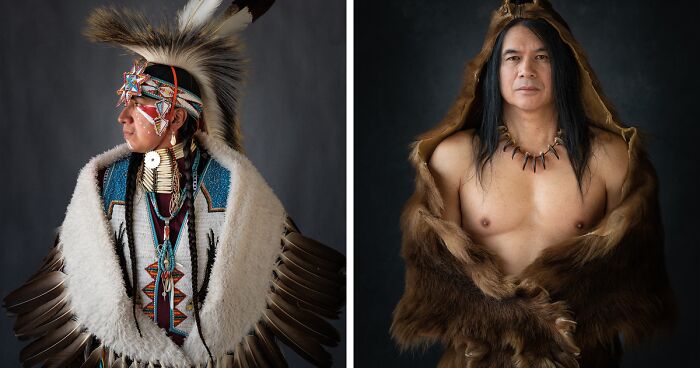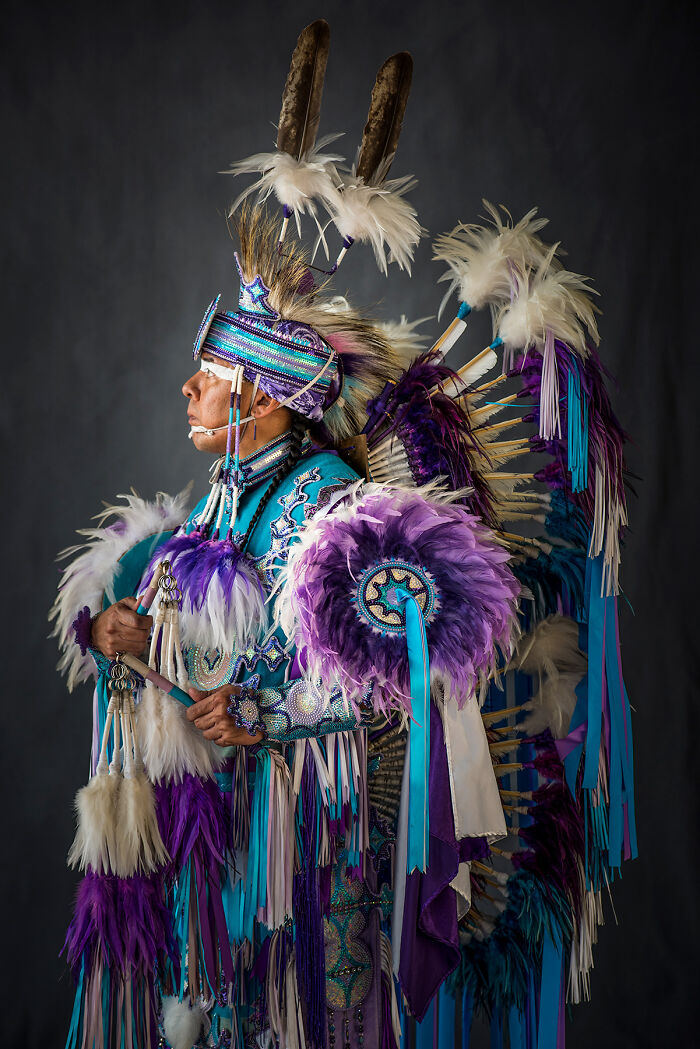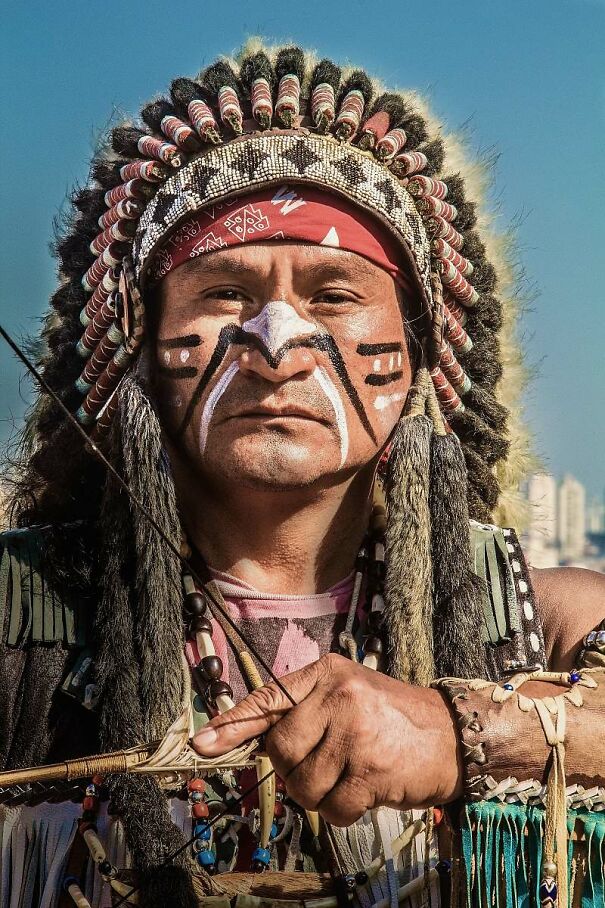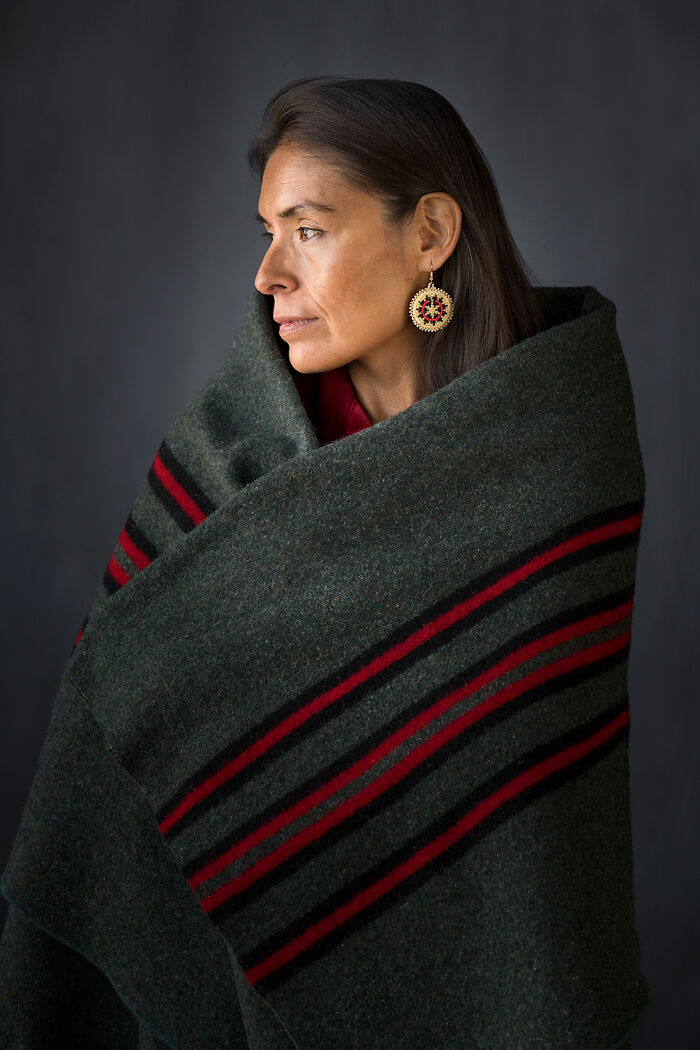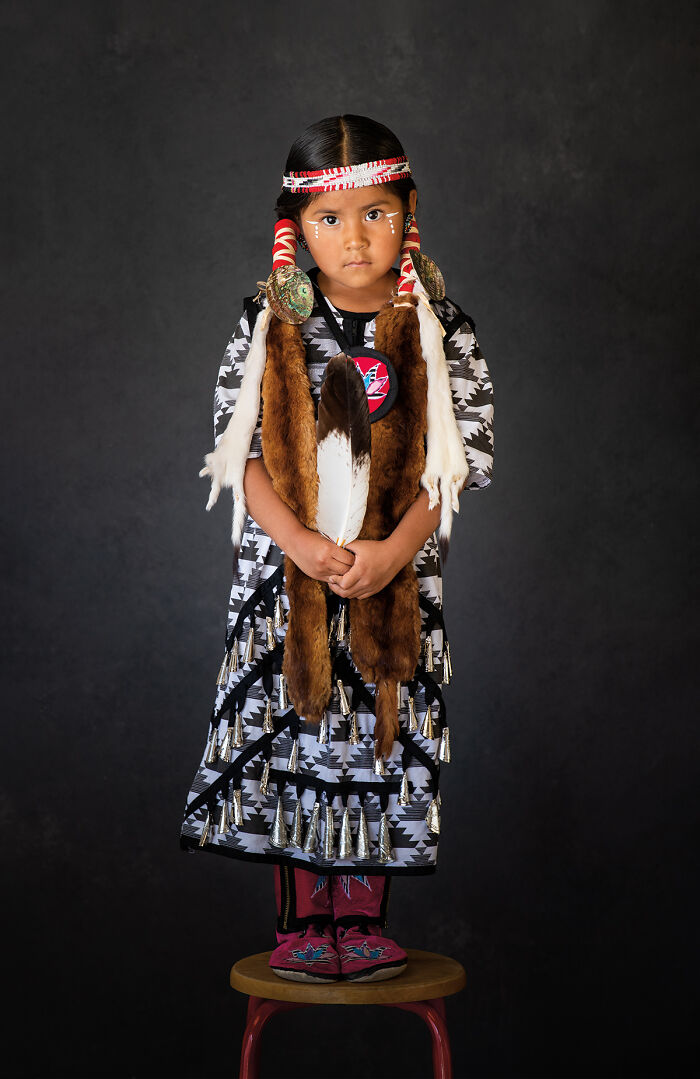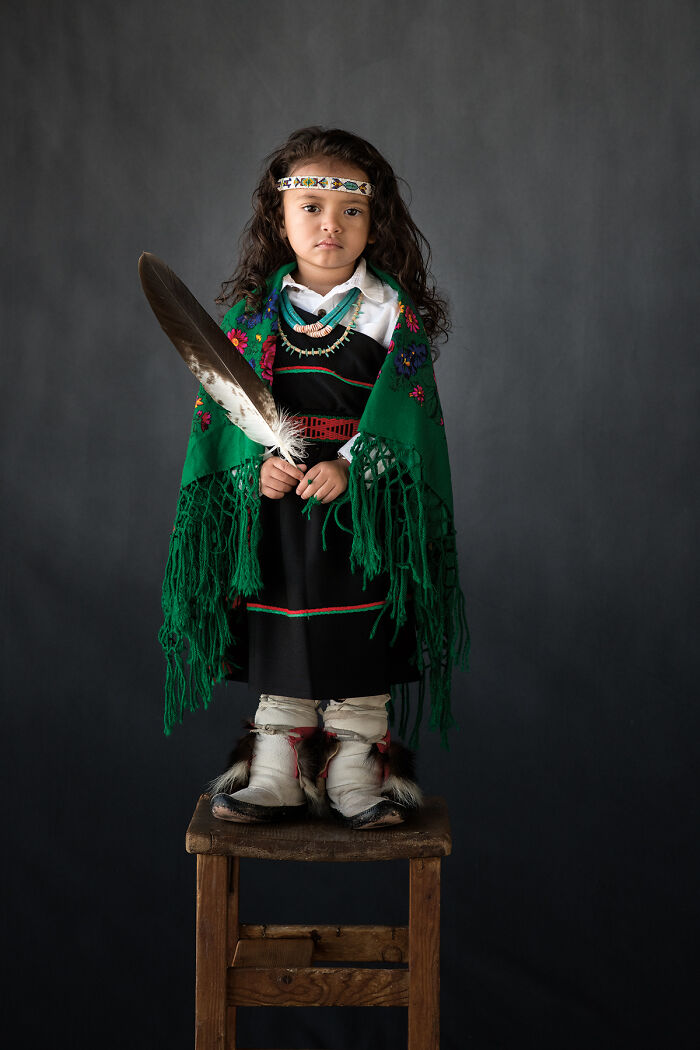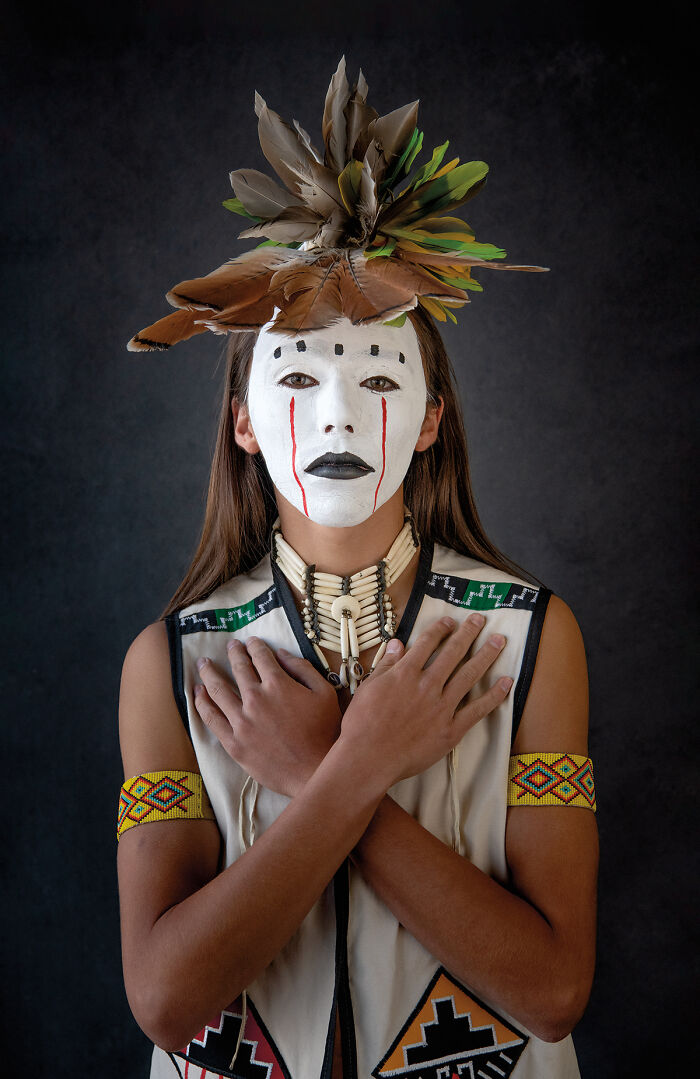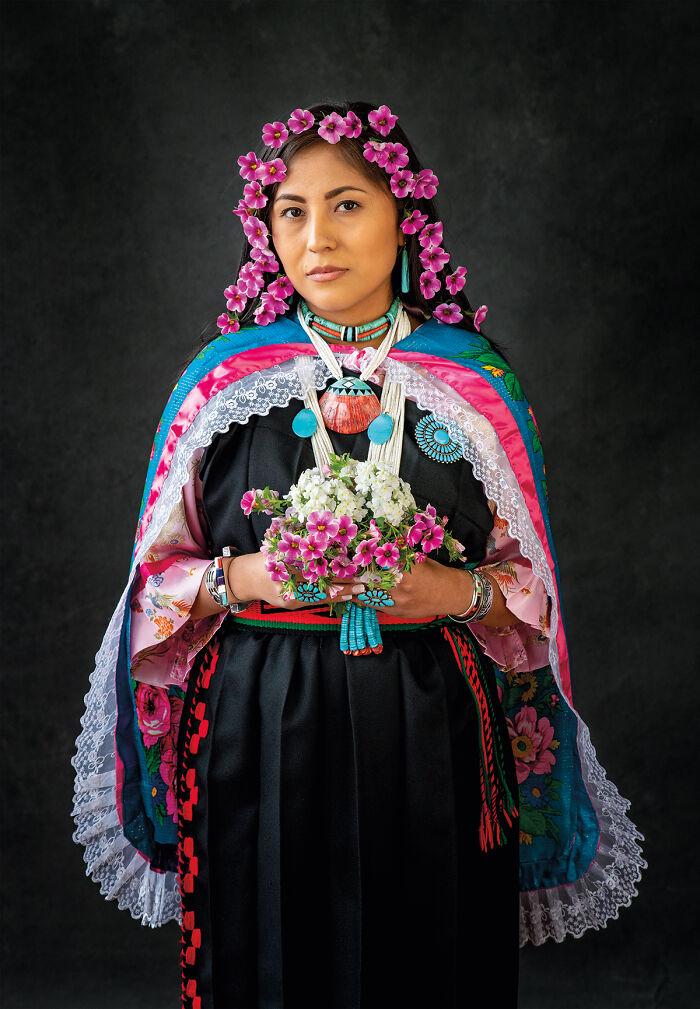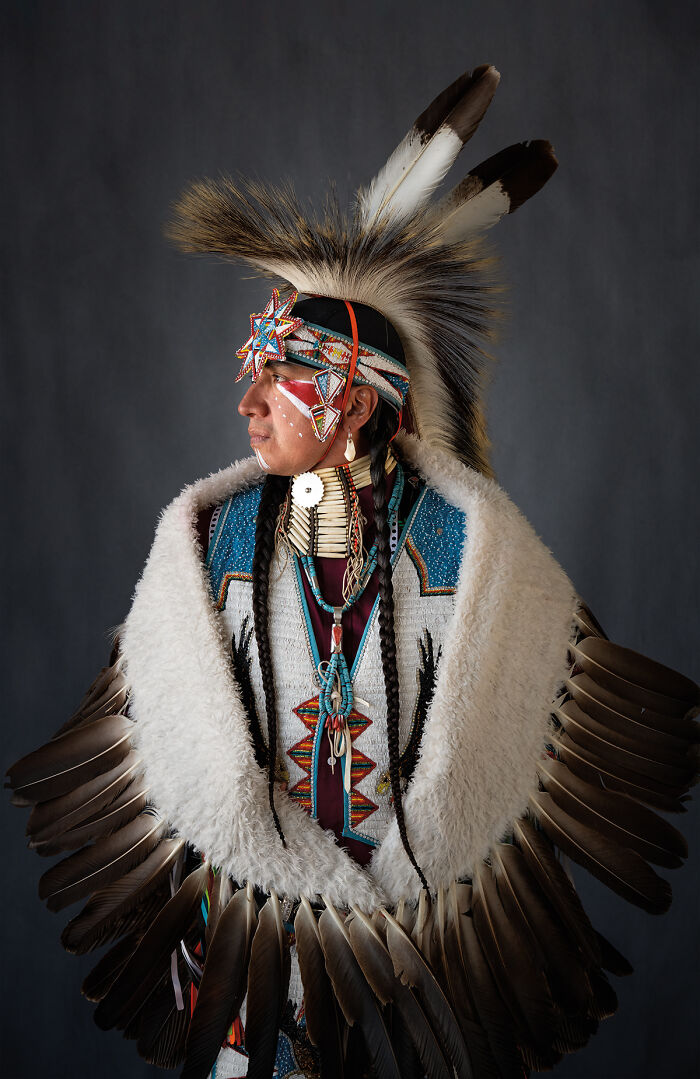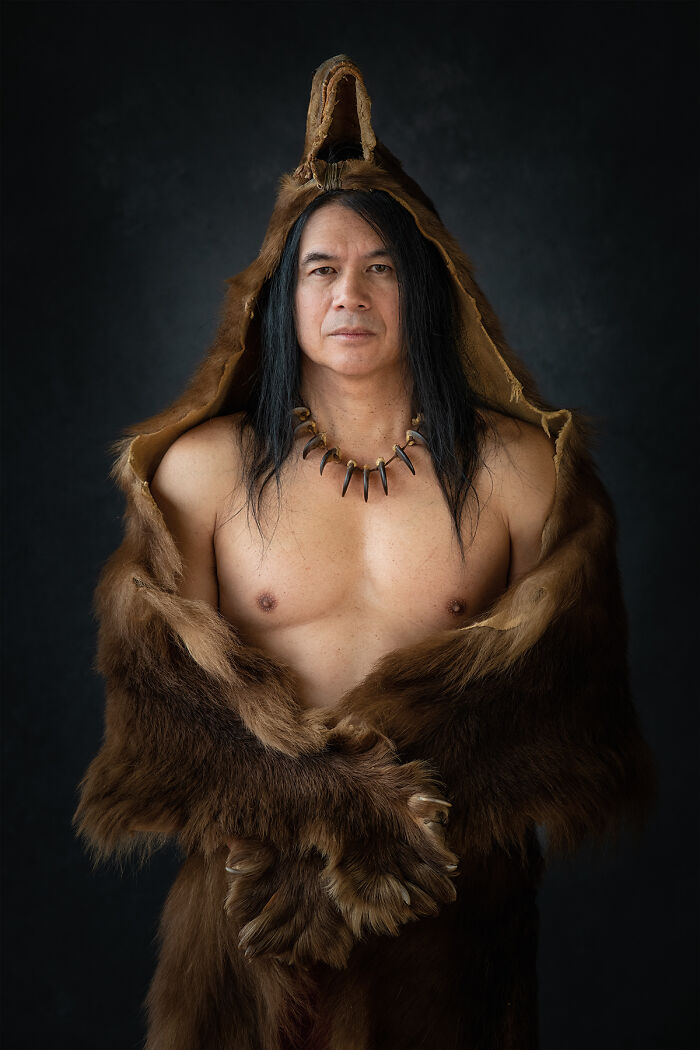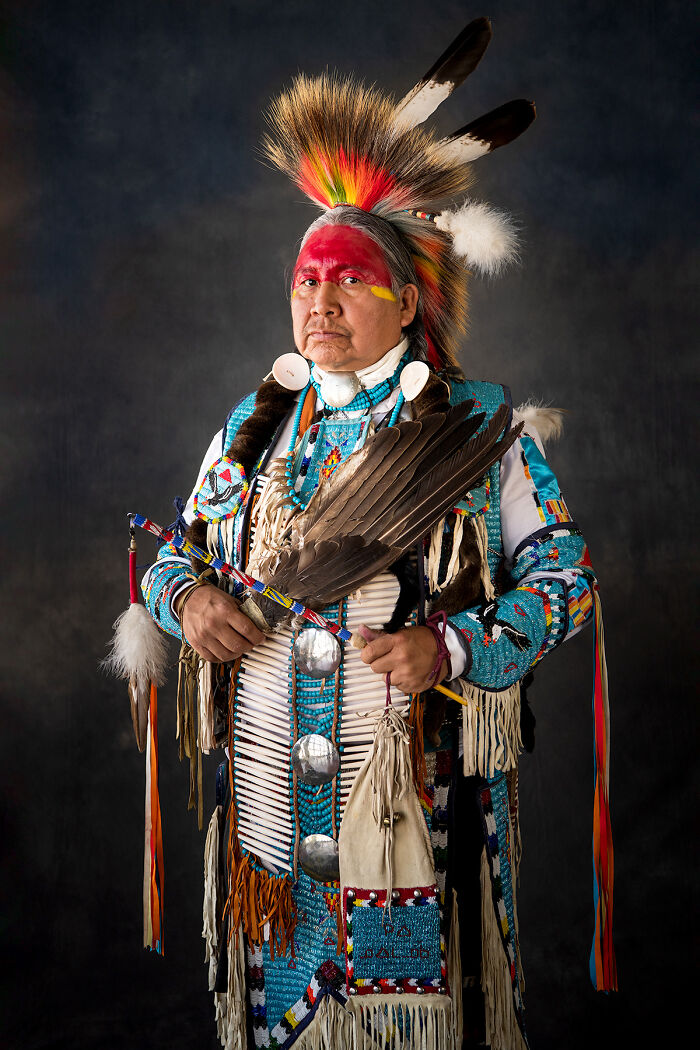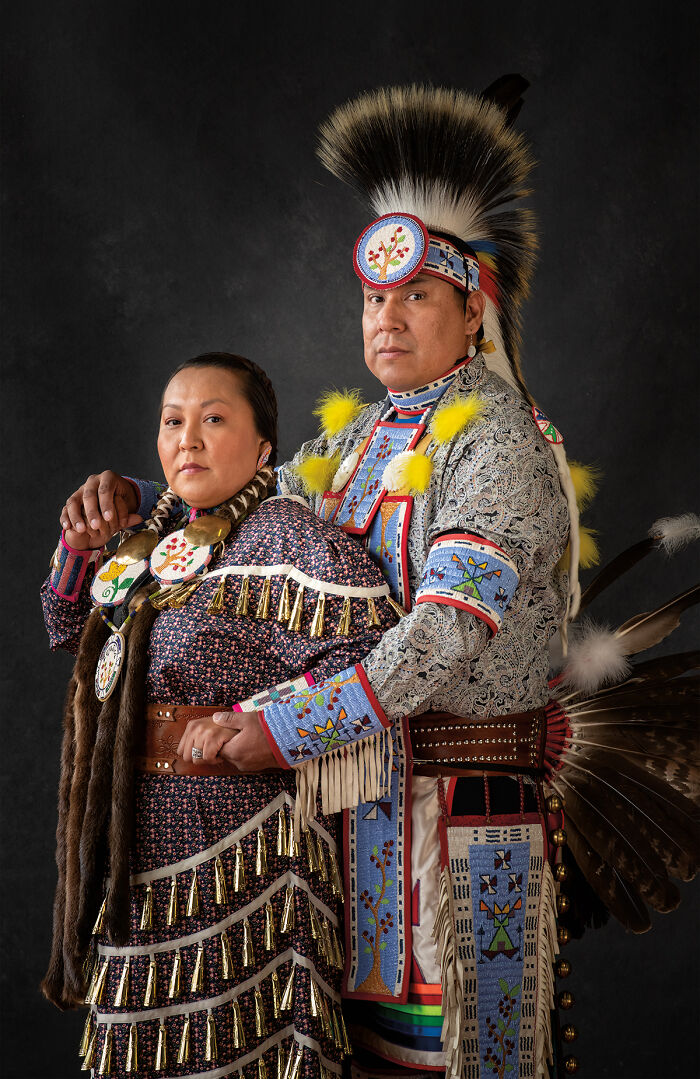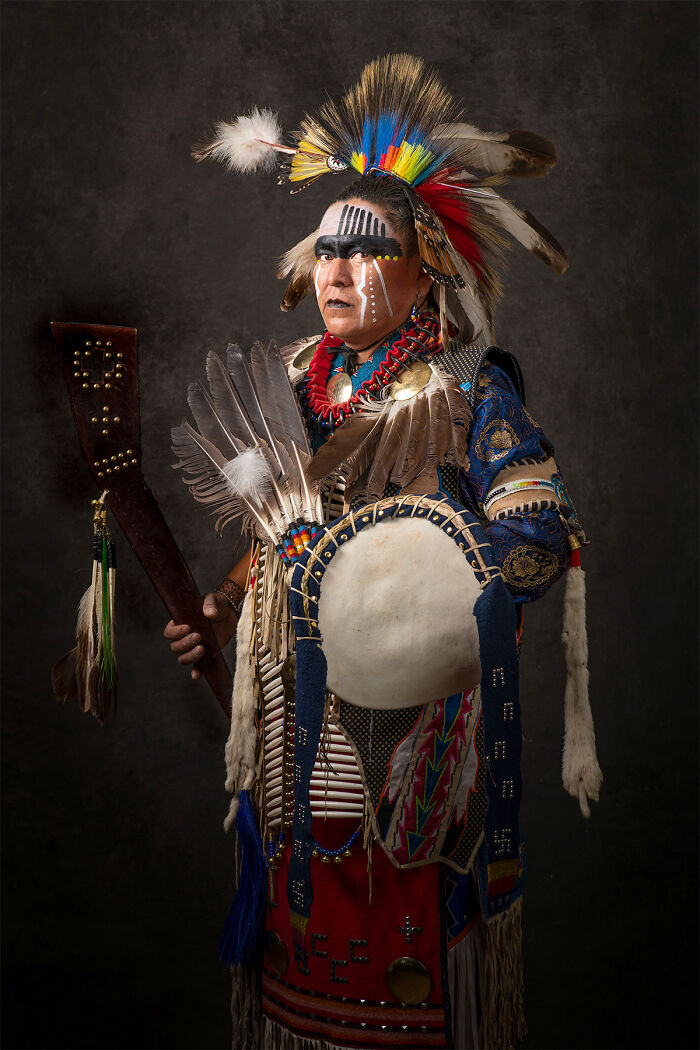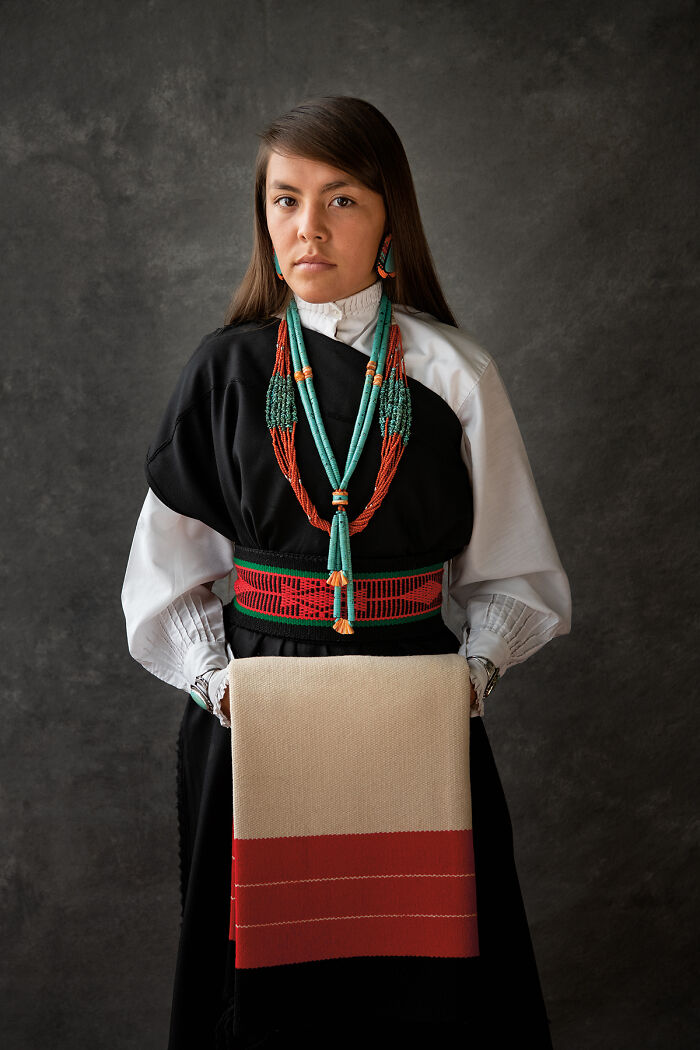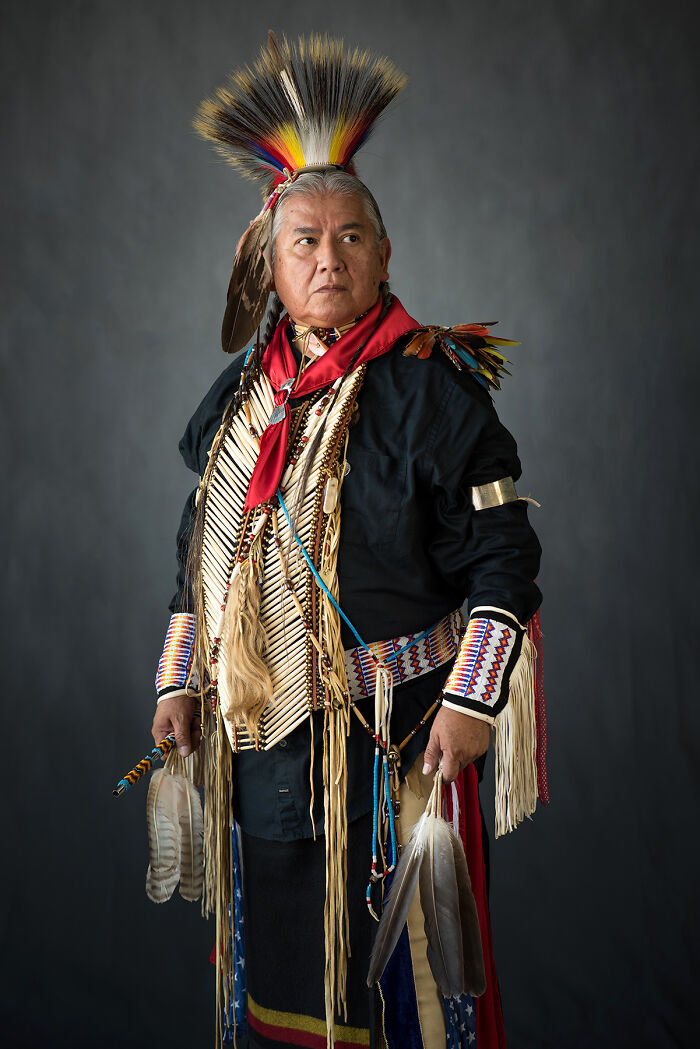Photographer Craig Varjabedian is working with indigenous people around New Mexico to celebrate their past and their culture with the Native Light Photo Collaboration Project.
When you look at the portraits, however, you don't see just the subject. You also get a glimpse of the bond they share with the photographer. After all, both of them have equal control of the end result. One takes care of what's behind the frame — operating the camera — and the other is responsible for everything within it — choosing clothing, regalia, and other objects that are important to them.
This collaboration is precisely what allows the image to truly represent the person being in front of the lens.
More info: craigvarjabedian.com | Instagram (h/t mmm)
If you enjoy the Native Light Photo Collaboration Project, consider supporting it by purchasing its printed version
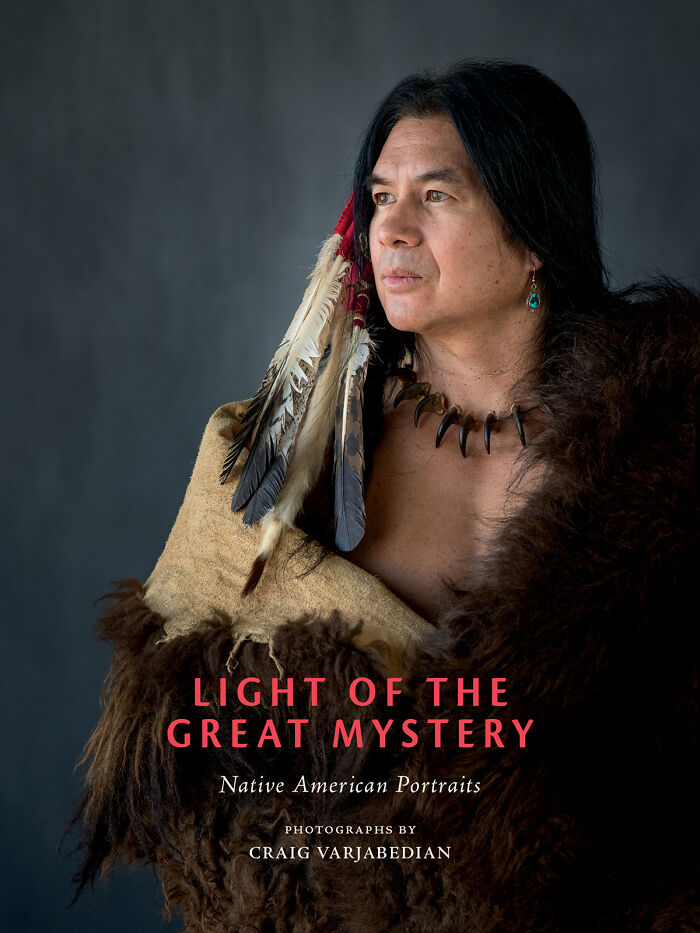
This post may include affiliate links.
Randale, Pow Wow Dancer, Comanche/Kiowa
Wow, the colours! Here is a talk from another dancer, and it is worth watching. The 13 hoop-dance at the end is incredible! "Living a circular life | Dallas Arcand | TEDxYYC" https://www.youtube.com/watch?v=niRs_VIqzYU
I really enjoy the colors but it says "authentic", did they really have such colors than? Would be fantastic but seems unlikely to me. Sorry for pointing this out.
Load More Replies...So beautiful! Such a shame that 99.99% were either blasted to kingdom come or killed by european smallpox in the 200 year genocidal american-indian war (1650-1850. 😞
Fantásticas fotos e um POVO ADORADO . Os grandes pais da humanidade com a sua sabedoria e ética.
Sorry! I have to call BS on this one. The means to make purple dye was not available to the native american tribes of the plains. It is from a specific type of seashell, which I'm not sure is even found on this continent's coast
Do you actually think that a specific type of seashell is the only way to dye clothing purple? Have you never heard of something called berries, flowers, etc.?
Load More Replies...It is special for Varjabedian himself, too: the photographer is also a member of a group of people that were considered 'the other' and targeted for extirpation. His grandfather fled the Armenian Genocide of the early 20th century. Varjabedian said that the devasting historical episode had a profound impact on his family, so much so that cultural disconnection through trauma is not merely a concept for him. It's part of reality.
"In order to make what I believe is a successful portrait, it is necessary to connect in some way with the person being photographed," he told Bored Panda. "Trust must be established and this takes time. I genuinely and deeply care about the people I photograph and believe that comes across during our early interaction. We talk and share stories and discover common ground. Through getting to know [each other], we eventually connect and trust and respect is established."
Diné Woman With Wedding Basket Earring
Varjabedian believes that ultimately everyone has a good story and for those who choose to share it, oftentimes it creates the picture he makes. "I want the resulting image to reveal a deeper sense of the person in front of the camera. The portrait can then take on a higher state of meaning, a more profound sense of being; an image that can hopefully touch others on a deeper emotional level."
The photographer usually finds the models through word of mouth from a network of people across the American Southwest, which he has built over the many years he has been working there.
Yanabah Moonsky (Sky Warrior), Diné
Men, women, and children are prominently positioned in front of the camera against a simple backdrop; front-and-center — the focus is squarely on the participant. "Their posture is stoic and strong, their facial expression powerful and vital. Some are posed in profile, in a stance momentarily frozen in motion. Others gaze elsewhere, away from the camera, their eyes concentrated far from the viewer’s line of sight. In contrast, some peer straight into my camera lens — a penetrating gaze most notably directed at the viewer with an expression layered in meaning," Varjabedian explained the visual structure of the project.
Tsiguwaenu Ohuwa Munu (Turbulent Lightning Cloud), Tewa, Nambé Owingeh
"I frequently shoot against a hand-painted grey background reminiscent of ones that photographer Irving Penn used years ago. The texture is there but I believe not distracting to the image, the neutral grey chosen because I knew it would beautifully present the color of what these subjects would be wearing."
"Most participants are poised in precious regalia and ceremonial attire while others are pictured in traditional dress, adorned with ornate turquoise jewelry. Some wear a delicate display of feathers in their hair while others exhibit a striking bustle of feathers and fringe that extend outward into space. Several accessorize with beaded shell necklaces and leather moccasins whereas a handful opt to drape themselves in the comfort of a wool blanket and animal pelts. Upon taking a closer look at the objects presented in the images, one may discover layers of meaning and symbolism—ornamental shells and animal motifs, vibrant patterns, geometric shapes, intricate beadwork and more."
Chuugaa Hoewii (Redhawk), Tewa, Ohkay Owingeh
The photographer pointed out that many of these clothing items, accessories, and ceremonial objects are deeply rooted in meaning and family heritage. "These items are emblems of self-preservation, history, and tradition. They are signifiers of tribal representation, ancestry, and spirit. They are symbols of time, identity, and personal narrative. They are embodiments of individuality and self-presentation. For many, the dress and regalia are passed down from generation to generation, making their way along the hands of ancestors, grandparents, and family members," he said.
Tanysha With Flowers In Her Hair, Keres, Kewa Pueblo
The goal of the Native Light Photo Collaboration Project is to create awareness of the beauty and dignity of Native American culture at a time when the U.S. seems culturally divided. That being said, having little knowledge on the subject won't take away from experiencing it. It's still authentic. "I think what the viewer should understand is that these images represent one facet of a person's life and there are still many facets that the images do not reveal," Varjabedian said. "The people too are not costumed in the sense that an actor might be in a play or movie. What you are seeing is the result of someone's personal devotion; the response of something deeply felt and believed and elaborated upon with the colors and objects chosen for what they are wearing."
Larry, Eagle Dancer, Meskwaki
What exquisite work that has gone into making this! You can see some of the technique used in feather weaving in this video: "Mary Weahkee makes a turkey feather blanket" : https://www.youtube.com/watch?v=6L4qRn3RIDc
Varjabedian thinks that much of what contemporary society has seen of Native American culture was created by the Hollywood movie industry and wild west shows and is often erroneous. "It is an indigenous culture that is centuries old, with much individuality and diversity, is multifaceted and deeply layered with meaning, deeper in fact than what most people might imagine or even understand," he said, adding that in the end, it is simply beautiful.
In The Belly Of The Bear (After A Photograph By Edward S. Curtis), Rodrigo, Chickasaw
Thamu Tsan (The Sunrise), Tewa, Nambé Owingeh
Elvin, Cree
Marlene (To'dikozhi) And Jayme (Wahinkpe Wakan), Navajo And Lakota
Calvert, Plains Dance Regalia, Diné
Would I be deeply impressed if I found myself in front of this man? You bet I would. There are serious and poignant reasons why traditional clothing is always very beautiful. It is made with love and pride and it is made to last. What a difference between this and fast fashion.
Povi T’say (Yellowflower), Tewa, Ohkay Owingeh
Wow. What beautiful blanket--necklace, the belt--the skill and talent that went into her regalia!
Elk Deer, Two Term Tribal Governor, Taos Pueblo
Isn't this a facial expression that says "I have seen a lot in my days, and you people do not often behave as you say, or as you should but I know what is right and you can never take that knowledge away." Knowledge can be gained at any age but wisdom comes with age.
Diné Tsoii (Yellowman), Diné
Chris, Deer Dance Regalia, Tewa, Ohkay Owingeh
One of the most impactful galleries I've seen on BP. So much pride, beauty.
I was told by someone who used to live in DC that there's a range of costumes at this museum https://americanindian.si.edu/
Load More Replies...This is really great, important work. More of this needs to be out there!
Thank you for this & giving us insight into these Native American cultures & their people.
I was wondering why some of them have slavic scarfs as parts of they outfit? Is it part of tradition or something modern?
Why could they have not left these people alone? Why can they not return to their old ways?
http://www.stitchinguphistory.com/2011/07/what-native-american-women-wore-pre_28.html
Variations on this is what we all loose when we fall for Fast Fashion which is easily accessible, cheap, poor quality, low workmanship (because the less time it takes to make it, the bigger the profit) and then the garment gets tossed out and ends up in a landfill. We are all descendants of a long line of people who wore their clothes until they were used for rags, and they had some gorgeous pieces that were used for special occasions.
One of the most impactful galleries I've seen on BP. So much pride, beauty.
I was told by someone who used to live in DC that there's a range of costumes at this museum https://americanindian.si.edu/
Load More Replies...This is really great, important work. More of this needs to be out there!
Thank you for this & giving us insight into these Native American cultures & their people.
I was wondering why some of them have slavic scarfs as parts of they outfit? Is it part of tradition or something modern?
Why could they have not left these people alone? Why can they not return to their old ways?
http://www.stitchinguphistory.com/2011/07/what-native-american-women-wore-pre_28.html
Variations on this is what we all loose when we fall for Fast Fashion which is easily accessible, cheap, poor quality, low workmanship (because the less time it takes to make it, the bigger the profit) and then the garment gets tossed out and ends up in a landfill. We are all descendants of a long line of people who wore their clothes until they were used for rags, and they had some gorgeous pieces that were used for special occasions.

 Dark Mode
Dark Mode  No fees, cancel anytime
No fees, cancel anytime 




